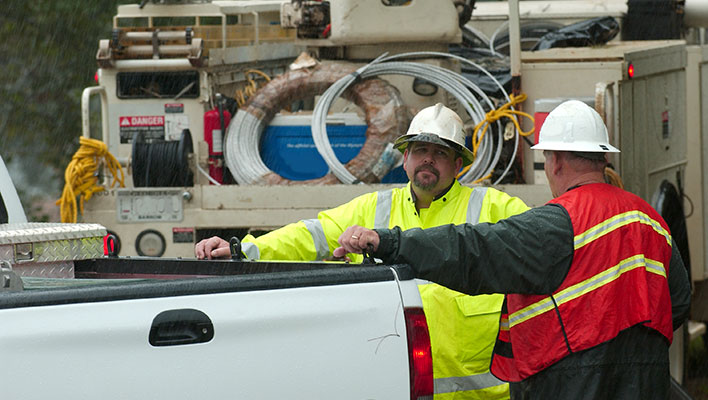What was normal is not so normal anymore. 2020 brought a slew of business challenges and changes that have become a healthy list of responding, restoring, and reporting best practices – even when we’re not in the middle of a pandemic. Utilities and critical infrastructure industries have stepped up and made the most of a trying time and found cost savings in the process.
Safety is not negotiable
The ability for employees and customers to be safe is and will forever be the best practice. Providing employees with proper PPE, hand sanitizer and making sure adequate protocols were in place in the case of crews entering a home or business built up and maintained consumer confidence and reinforced that employee safety really is the number one priority. Masks and social distancing went a long way.
Also, listening to employees and providing better lanes of open communication with supervisors helped uneasy teammates eventually become more comfortable and productive. Once safety regulations and rules were explained thoroughly and became routine, crews shared their own ideas that turned out to be the most creative solutions to further COVID-19 safety protocols. Allowing crews time for understanding and the sharing of their own personal beliefs and viewpoints continues to be a best practice that is not going anywhere anytime soon.
Bringing it Home
One employee suggestion that had traction and was later adopted by many utilities was allowing first responders to take their vehicles home. Employees took pride in having the vehicles and bucket trucks parked in their very own driveways, and it unintentionally provided a way for energy providers to be more visible in the community. Wrench time was also amplified as those entrusted with fleet vehicles could drive directly to the job site from their front door.
For those without vehicles to bring home, the best practice became to stage trucks in yards and letting employees drive right up to their work vehicles. The savings mounted quickly as the wrench time produced by this one item alone increased the daily work that was being accomplished. There was no lingering at the coffee pot as crews would get in and head right out to a job site. Utilities found that daily shift briefings were delaying exit times and that once you got out of your employees’ way and let them work, productivity margins were enhanced and exceeded.
Remote working is another best practice. As noted above with work vehicles, when operation teams were allowed to work from home, the amount of increased productivity was notable. Brick and mortar operating centers are not always needed in the new normal and we rely on more tech to get the job done.
In the cloud
Many new opportunities during 2020 were identified that will change business for the better, such as using the processing power of the cloud to deal with fluctuating resource demand needs. The integration of SAAS platforms like the ARCOS Resource Management Platform into the daily resource routine has become an operating standard. ARCOS Crew Manager is an essential solution that was rapidly adopted to keep employees safe while continuing to get work completed. It was configured in new, unique ways. By using dashboards suggested by operation teams, it can display the availability of crews no matter if it is blue or grey sky making activation and notification a breeze across the company. Whether on a job site or virtual, it has become part of the resource transition solution that keeps crews aligned with work rules and business contracts. ARCOS’s Mobile capabilities are being used as a best practice to keep work pods and employee separation in place while still filling and completing work tickets.
What’s Evolving
The pandemic forced us to think out of the box in the way we conduct business. It made leaders get more comfortable with the virtual world. It’s shown that some positions can flourish by working from home. It’s reduced travel time. Now you don’t have to travel 5 hours for a 2-hour meeting in the territory you cover. You can sign on virtually and gain your travel time back while saving on gas and mileage.
The pandemic has also helped culturize ICS and emergency planning – and made it top of mind. There has always been a question of if emergency management is needed in whatever is being done – from daily briefings to how a district may need coverage after an event. Utilities are seeing a strengthened bond of cross departmental coordination that is now approaching this dilemma as a single emergency and ICS management team.
As work is being assigned electronically, job folders are becoming a thing of the past too. Working remotely is giving utilities the ability for an employee to immediately jump on a problem. You no longer must wait to come into the office before problems are remedied.
All the above are best practices that are evolving and being defined by the pandemic lessons provided by 2020. The pandemic may have surprised the industry, but as always, we met it with thought, tenacity and ingenuity that will continue to provide even more best practices as we move through 2021 and beyond. Let ARCOS help.




